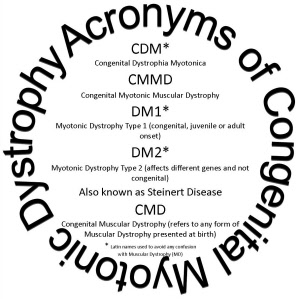General Anaesthetic can be dangerous for people with DM. Often Medical Professionals are not 100% aware of the severity of the danger, so we have produced a reference guide.
This is helpful to print off and take to appointments with you.
Quick View Anaesthetic Guidelines - CureDM.
Sourced from MDUK Complex Care plans and Consensus based care guidelines
* Risk is not defined by previous GA’s or severity of disorder.
* I am at risk of anaesthetic complications because of my Neuromuscular Condition – Myotonic Dystrophy. (Please don’t confuse with Muscular Dystrophy as DM has specific risks)
* I am at increased risk of Cardiac Dysrhythmia and Ventricular Impairment and should be on a continuous ECG after any General Anaesthetic, for a minimum of 24-48 hours – to catch any symptoms early.
* I may be extremely sensitive to, or develop a reaction to certain anaesthetic agents, including malignant hyperthermia. Suxamethonium/succinylcholine MUST BE AVOIDED in GA.
* During any GA, the room should be warmed, or warming blankets used. And fluids should be warmed to room temperature to avoid myotonia during the operation.
*I should be allowed to wake naturally, and not have breathing equipment removed until I am fully awake.
*I am at risk of delayed recovery after GA or sedation and will need a higher level of post-operative care.
*It is imperative there is an HDU/ICU bed available for planned procedures.
*I will need to be on a continuous SATS monitor to monitor my O2 levels, for a minimum of 24-48 hours as my condition has an increased risk of delayed issues – often presenting at the 24-hour point.
* I should be on a continuous ECG for 24 hours to enable any changes to be found early. These can be delayed in Myotonic Dystrophy.
* I may have a higher risk of pneumonia because of aspiration and weak respiratory muscles, specifically after a GA.
hundreds of newly alexander mcqueen 57583 fashionable shoes.rolex copy forum watertight wristwatch famed environment.* I may be more sensitive to the effects of opioid analgesics and sedatives as these may worsen my breathing function and consciousness. AVOID Morphine and associated opioids after any GA.
* Please do not give me oxygen without monitoring my Carbon Dioxide Levels as I am at a high risk of CO2 retention, even though my O2 levels are stable. If a BIPAP is used in my normal care, Oxygen should only be given through my Bipap machine.
* Patients with DM have reduced Na⁺/K⁺ pump and are at risk of hyperkalaemia and are sensitive to excess potassium. Only give extra potassium if clinically required. It can also exacerbate myotonia and pain.
THIS IS A GUIDE. PLEASE READ ANAESTHETIC GUIDELINES FOR FULL INFORMATION.


Disclaimer:
"This site is owned and operated by CureDM, which is a registered charity. Nothing contained in this site is or should be considered, or used as a substitute for medical advice, diagnosis or treatment. The site owners and administrators cannot accept any legal or personal liability for the outcomes of actions taken by you in using this information. This site and its information do not constitute the practice of any medical, nursing, registered dietitian or nutritionist, or other professional health care advice, diagnosis or treatment.
All items and articles are written by individual authors. The opinions expressed are entirely the authors' own, except where clearly indicated. We strongly advise you to speak with a medical professional about all aspects of the condition."